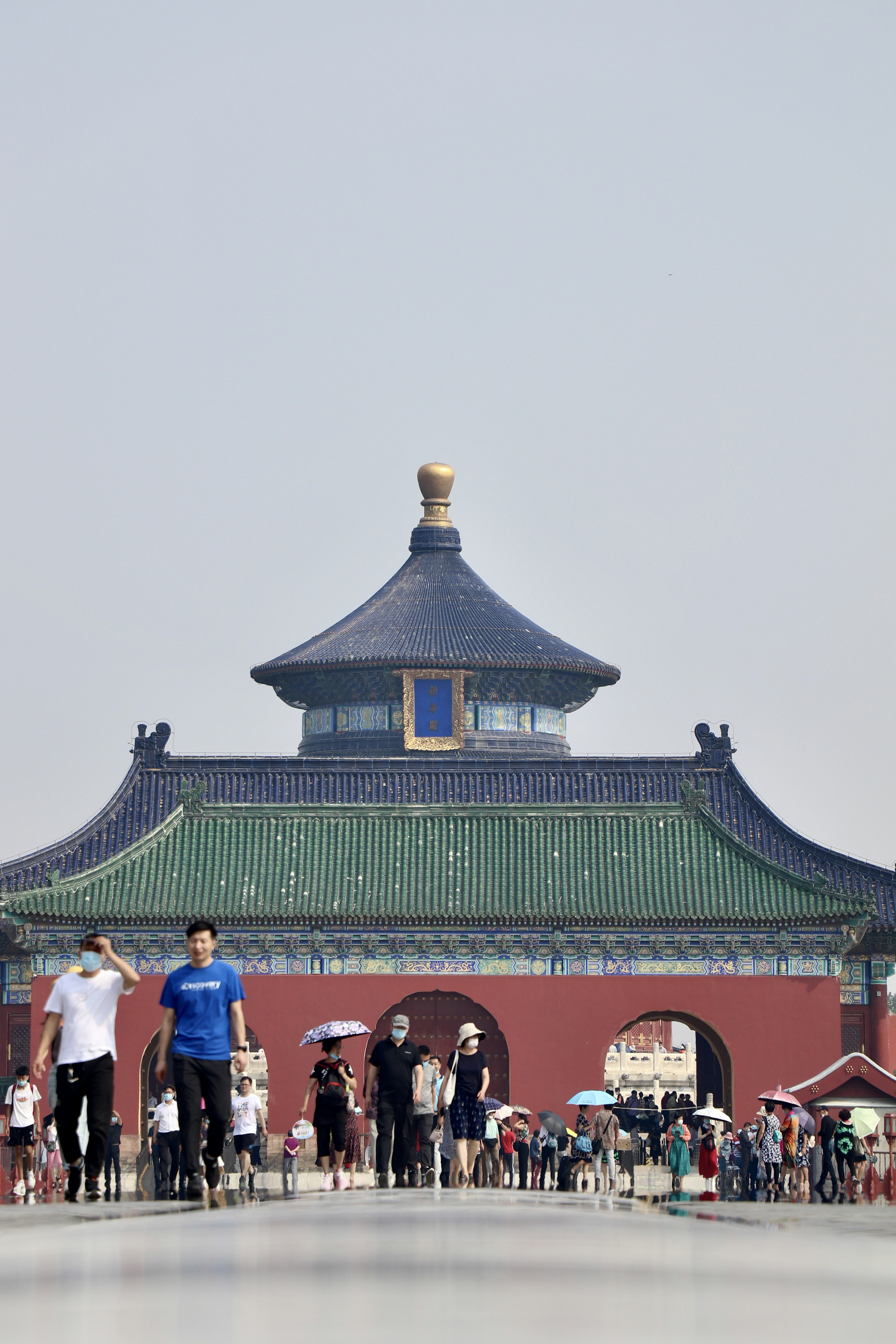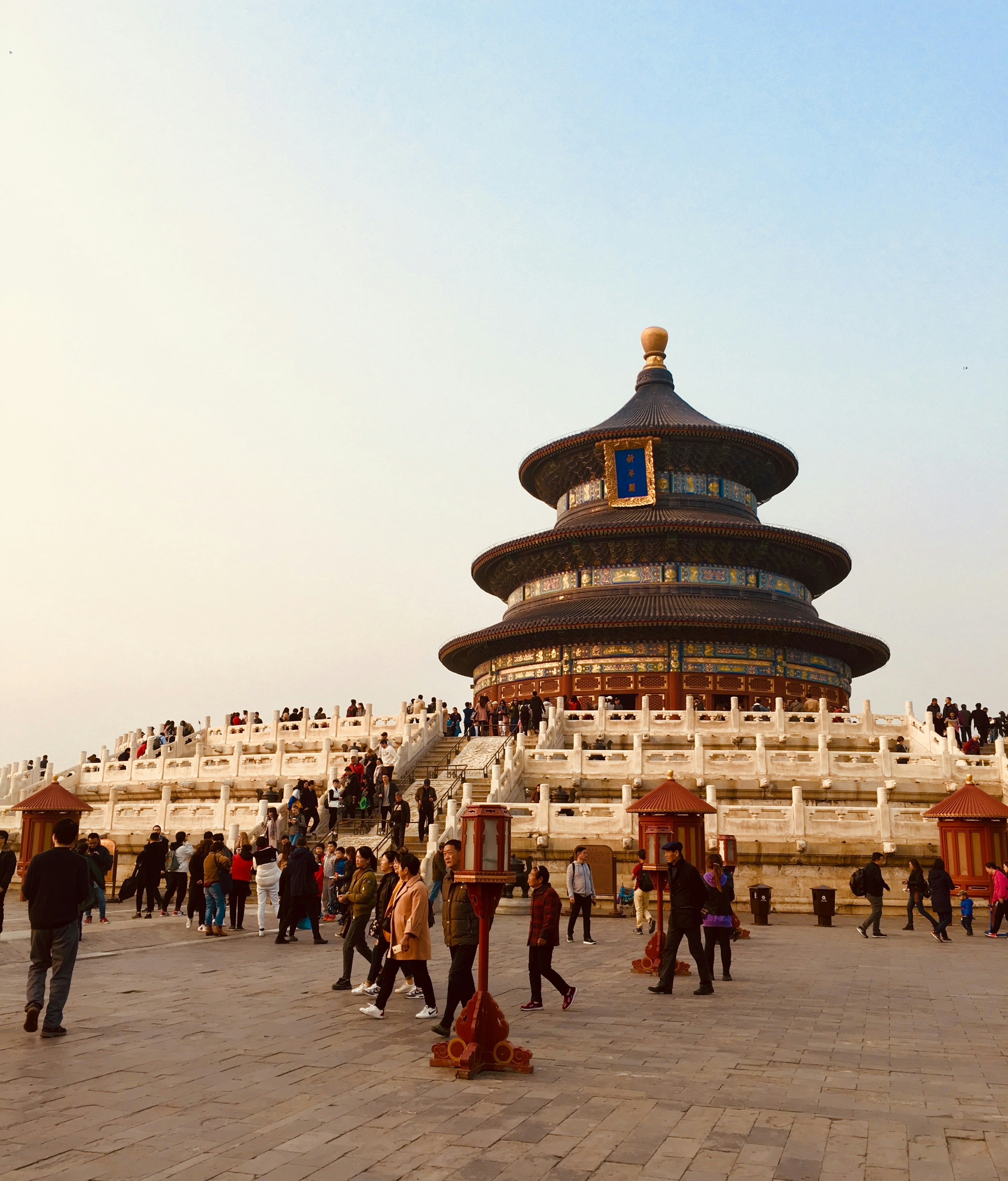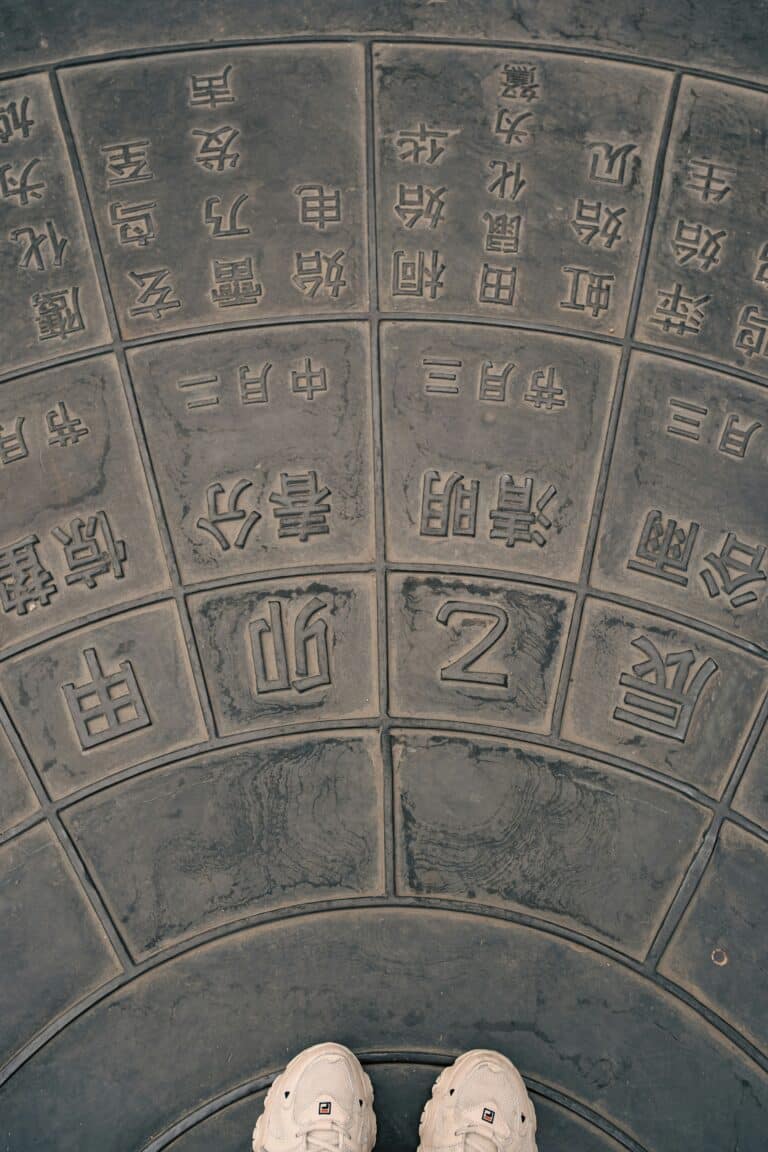Temple of Heaven: Imperial Sacrificial Altar Travel Tips in Beijing
The Temple of Heaven, a UNESCO World Heritage site built in 1420, is one of the most significant historical attractions in Beijing. This majestic complex, renowned for its architectural brilliance, offers travelers a glimpse into the religious and cultural practices of ancient Chinese emperors. As you plan your visit, understanding the history and significance of this site will enrich your experience and appreciation of its beauty and purpose.

Introduction to the Temple of Heaven
The Temple of Heaven, located in the heart of Beijing, is a remarkable testament to the Ming Dynasty's architectural prowess and spiritual beliefs. Established in 1420, this temple complex served as a sacred space where emperors performed rituals and sacrifices to heaven, praying for good harvests and the well-being of their subjects. The temple's design embodies the ancient Chinese cosmological beliefs, illustrating the principle that “heaven is round and earth is square.” Visitors can explore this vast site, which is surrounded by historic pine woods and meticulously landscaped gardens, allowing them to connect with the rich history and culture of China, especially the practices of worship heaven.
Historical Significance of the Temple
The historical significance of the Temple of Heaven is profound, as it was the focal point for the emperors of the Ming and Qing dynasties to perform sacrificial rites. Originally built during the reign of the Yongle Emperor, this complex has undergone various renovations, particularly under the Jiajing and Qianlong emperors, which enhanced its status as a symbol of imperial authority. The temple was officially renamed in 1534, marking a pivotal moment in its history when the emperor separated the sacrificial rituals for heaven and earth. Its construction and subsequent developments echo the political and spiritual dimensions of Chinese history, making it an essential site for understanding the ceremonial practices of Chinese emperors.
Overview of the Temple of Heaven Park
The Temple of Heaven Park, sprawling over approximately 2.73 km², is an expansive public space that surpasses even the Forbidden City in size. The park features a meticulously designed layout, with its significant structures aligned along a central axis. Visitors can wander through the inner and outer areas of the park, discovering attractions such as the Hall of Prayer for Good Harvests, the Circular Mound Altar, and the Imperial Vault of Heaven. The park not only serves as a historical site but also as a vibrant community space where locals engage in tai chi, dancing, and morning exercises, creating a lively atmosphere that complements the temple's solemnity.
Importance of the Imperial Sacrificial Altar
The Imperial Sacrificial Altar, commonly referred to as the Temple of Heaven, holds immense importance as the site where emperors performed rituals to ensure bountiful harvests. Rooted in the belief that the emperor was the “Son of Heaven,” these sacrificial ceremonies served as a bridge between the celestial and earthly realms. Each structure within the temple complex, from the Hall of Prayer for Good Harvests to the Circular Mound Altar, played a specific role in these rituals, often connected by the long corridor that links them. The ceremonial offerings made during significant events, such as the winter solstice, not only underscored the spiritual dimensions of governance but also reinforced the emperor's legitimacy and divine right to rule, echoing the intricate relationship between spirituality and political power in ancient China.
Planning Your Visit to the Temple of Heaven
Best Time to Visit the Temple of Heaven
When planning your visit to the Temple of Heaven, timing can greatly influence your experience. The Temple of Heaven Park is ideal for year-round exploration, as each season presents its unique charm, attracting local people and tourists alike. Early mornings stand out as the best time to visit, allowing guests to witness local residents engaging in morning exercises like tai chi and dance, creating a vibrant atmosphere. Spring and autumn, with their mild weather, enhance the enjoyment of outdoor activities within the temple complex. However, summer brings heat and humidity, while winter can be quite chilly. Therefore, it’s wise to dress appropriately and consider visiting on weekdays to avoid the larger crowds typically seen during public holidays.
Opening Times and Admission Fees
Understanding the opening times and admission fees is crucial for a smooth visit to the Temple of Heaven. The park opens daily, but hours vary by season; from April to October, the hours are 6:00 AM to 9:00 PM, while from November to March, the park opens slightly later at 6:30 AM. The admission fee is quite affordable, costing CN¥15 (about US$2.5) during peak months and CN¥10 during off-peak times. Specific attractions within the complex, such as the Hall of Prayer for Good Harvests and the Circular Mound Altar, may require additional fees. It is advisable to allocate approximately two hours for a thorough exploration of the temple complex, including the fasting palace, to appreciate its architectural beauty and historical significance fully.
How to Get to the Temple of Heaven
Getting to the Temple of Heaven is convenient, given its location in the Dongcheng District of Beijing, easily accessible from the south gate. Public transportation, including the subway and buses, provides easy access to the park. For instance, visitors can use Line 5 to reach Tiantan Dongmen Station for the East Gate, or Line 7 to access the North Gate via Qiaowan Station. If you prefer taxis, it's beneficial to communicate the Chinese name of the gates to the driver for clarity. Additionally, private transfer services are available for those seeking a more comfortable journey, particularly during busy weekends and public holidays. Understanding these travel tips ensures a hassle-free trip to this iconic UNESCO World Heritage site.
Exploring the Temple of Heaven Complex

The Imperial Vault of Heaven
The Imperial Vault of Heaven, situated gracefully between the Hall of Prayer for Good Harvests and the Circular Mound Altar, is a remarkable structure that showcases the ingenuity of ancient Chinese architecture. This building served a vital purpose as the storage site for the tablets used in the harvest prayer ceremonies, emphasizing its significance in the worship of heaven. The design of the vault is particularly striking, as it features a vast dome supported by 16 wooden pillars, all crafted without the use of nails, reflecting the meticulous craftsmanship of the Ming Dynasty. Surrounding the vault is the famous Echo Wall, renowned for its exceptional acoustics that allow sounds to travel great distances, making it a captivating feature for visitors. The harmonious design of the Imperial Vault of Heaven illustrates the ancient Chinese belief in the importance of aligning architectural elements with cosmic principles, emphasizing a connection to the universe.
The Circular Mound Altar
The Circular Mound Altar, a three-layered marble structure constructed in 1530 by the Jiajing Emperor, stands as a testament to the ceremonial practices of the Ming and Qing dynasties. This significant altar is enclosed by two sets of walls, where the inner circular wall symbolizes heaven and the outer square wall represents earth, embodying the ancient Chinese cosmological idea that heaven is round and earth is square. Traditionally, the altar was the focal point for winter solstice ceremonies, during which the emperor prayed for good weather and abundant harvests. At its center lies the Heart of Heaven stone, known for its unique acoustic properties that amplify sound, creating an echo that reverberates throughout the altar. The design incorporates the auspicious number nine, which holds deep significance in ancient Chinese culture, symbolizing eternity and reinforcing the spiritual connection between the emperor and the divine.
The Role of Divine Music Administration
The Divine Music Administration played an essential role within the Temple of Heaven complex, responsible for overseeing the ceremonial music and instruments integral to sacrificial rituals. This important building facilitated the preparation and rehearsal of music that accompanied the emperor's elaborate ceremonies, highlighting the significance of sound in invoking the favor of the heavens. The music, often considered a divine language, was believed to bridge the gap between the earthly realm and the celestial. As one of the five major buildings within the Temple of Heaven, the Divine Music Administration underscores the importance of music in ancient Chinese culture and its deep connections to religious practices. The orchestration of these musical elements was crucial in creating an atmosphere of reverence and spirituality during the emperor's sacrifices to heaven, reinforcing the cultural and historical richness of the Temple of Heaven.
Experiencing Local Culture at the Temple of Heaven
Morning Exercise and Community Activities
At the Temple of Heaven Park, the early morning hours are a vibrant spectacle of community life. Locals flock to this expansive area to partake in various activities, making it a hub of morning exercise. The park is often dubbed “Morning Exercise Heaven” due to the abundance of residents practicing tai chi, engaging in spirited dances, or playing chess in animated groups. This lively atmosphere offers visitors a unique opportunity to immerse themselves in the local culture and witness the daily lives of Beijingers. Encouraged to join in, tourists can participate in these communal activities or simply observe, fostering a sense of connection with the community while enjoying the serene surroundings of this UNESCO World Heritage site.
Prayer for Good Harvest Rituals
The Temple of Heaven holds a profound historical significance as the site where emperors conducted rituals, particularly prayers for good harvests. These ceremonies, meticulously organized according to the lunar calendar, occurred three times a year—at the winter solstice, summer solstice, and the inception of the lunar year. During these pivotal events, the emperor would ascend to the altar and pray for favorable weather conditions and abundant crops, reinforcing his role as the mediator between heaven and earth. Such rituals were not merely ceremonial; they underscored the importance of agricultural prosperity in ancient Chinese society, illustrating the deep-rooted connection between spiritual beliefs and the sustenance of the people. The echoes of these ancient practices still resonate within the temple complex today, captivating visitors with the rich history of worship of heaven.
Exploring Nearby Attractions like the Forbidden City
The Temple of Heaven is strategically positioned near several other iconic attractions in Beijing, making it an ideal starting point for cultural exploration. Just north of the park lies the Forbidden City, a majestic palace complex that showcases the imperial heritage of the Ming and Qing dynasties. Visitors can easily plan a comprehensive day of sightseeing, combining their trip to the Temple of Heaven with visits to nearby landmarks such as the Beijing Ancient Architecture Museum and Taoranting Park. This proximity allows tourists to delve deeper into Beijing's rich history and culture, offering a holistic experience of the city’s grandeur and the profound narratives woven into its architectural wonders. A visit to the Temple of Heaven seamlessly transitions into an exploration of ancient Chinese civilization.
Travel Tips for a Successful Trip to the Temple of Heaven
What to Bring Along for Your Visit
When preparing for your visit to the Temple of Heaven, packing the right essentials can enhance your experience significantly. First and foremost, water is crucial, particularly if you plan to walk extensively through the expansive Temple of Heaven Park. Comfortable walking shoes are a must, as the park covers a vast area filled with stunning architectural marvels and lush landscapes. A camera is highly recommended to capture the beauty of the imperial vault of heaven and the hall of prayer for good harvests, along with the vibrant community life. For those who wish to engage in morning exercises, a light jacket may be advisable, as early mornings can be cool. Lastly, consider carrying a small backpack to conveniently store any personal items while you explore the temple complex and its surrounding areas.
Etiquette and Respectful Behavior
Visitors to the Temple of Heaven should be mindful of proper etiquette and respectful behavior, particularly in areas of cultural and religious significance. Maintaining a quiet demeanor in sacred spaces is essential, as it honors the rituals and practices that have taken place within the temple complex for centuries. If you wish to engage with local residents during morning activities, it is courteous to ask for permission before joining in, fostering goodwill and respect. Additionally, staying aware of your surroundings and adhering to any posted rules or guidelines within the park is vital for ensuring a pleasant experience for all. By embracing these principles of etiquette, visitors can contribute to the serene atmosphere that defines the Temple of Heaven.
Best Ways to Enjoy the Cypress Trees and Natural Beauty
The Temple of Heaven Park is celebrated not only for its architectural splendor but also for its stunning landscape, particularly the ancient cypress trees that dot the area, located south of the main building. To truly appreciate this natural beauty, leisurely strolls along the park's well-maintained pathways are highly recommended. Finding tranquil spots to relax and soak in the serene environment adds to the overall experience. Early mornings or late afternoons provide the best lighting for photography, capturing the enchanting scenery bathed in soft hues. Visitors can also partake in delightful activities such as kite flying or picnicking beneath the shade of these majestic trees, allowing for a peaceful connection with nature amidst the historical backdrop of the temple complex.


